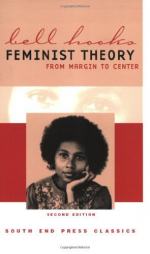
|
| Name: _________________________ | Period: ___________________ |
This test consists of 15 multiple choice questions and 5 short answer questions.
Multiple Choice Questions
1. Which definition of feminism does not work, according to the author?
(a) One that looks for new definitions of equality.
(b) One that is grounded in the desire for equality with men.
(c) A definition that revolves around equal rights for all people.
(d) A definition that completely rejects patriarchy.
2. What is the definition of feminism proposed by the author?
(a) Feminism should be understood as total personal freedom for everyone.
(b) Everyone should develop her own definition of feminism.
(c) Feminism must be defined as community before anything else.
(d) The struggle to end sexist oppression in all its forms, whether economic, political, social, or sexual.
3. How does the author characterize the aims of the feminist movement in relationship to other movements?
(a) The feminist movements aims and intentions are interwoven with those struggling against classism, racism, heterosexism, and other forms of oppression..
(b) The aims and goals of the feminist movement are really separate from other movements.
(c) There is a relationship between feminism and the struggle against ageism, but that is all.
(d) Feminists should stay focused on their own goals and not look to other movements.
4. "The problem that has no name" is a quotation by which author?
(a) Leah Fritz.
(b) Rita Mae Brown.
(c) Betty Friedan.
(d) Bell hooks.
5. How does the author describe feminism in the U.S.?
(a) As a separatist movement.
(b) As a collective Marxist movement.
(c) As a bourgeois ideology based on liberal individualism.
(d) As a radical revolution.
6. In the Preface to the first edition (1984), what general theme does the author present?
(a) A history of the feminist movement.
(b) The central theory of her work.
(c) Her mother's life story.
(d) Her ideas about high school education for girls.
7. For the author, what must happen to feminism in order for it to have "a revolutionary, transformative impact on society"?
(a) People involved in feminism must reject the popular media.
(b) Feminism must become a mass-based political movement.
(c) Feminism must exclude men from the movement.
(d) Feminism must become more intellectual.
8. What change to the language expressing involvement in feminism does the author advocate?
(a) Change "I am a feminist" to "I advocate feminism."
(b) Change "I am a feminist" to "I support the feminist movement."
(c) Change "I advocate feminism" to "I am a feminist."
(d) Change "I advocate feminism" to "I support the feminist movement."
9. Were there ever alternate reactions to black women's efforts to participate in the early feminist movement, and if so what were they?
(a) Black women were always seen as a threat to the movement.
(b) Some white feminists rejected their ideas but most did not.
(c) Black feminists' ideas about class were accepted, but not their ideas about race.
(d) Sometimes their ideas inspired new understanding and growth in the movement.
10. Why does the author hold her particular beliefs about prioritizing struggles against different forms of prejudice?
(a) Because she is a women, she places gender issues first.
(b) All are ultimately as destructive of society and the individual as the other.
(c) She holds her views because she needs to maintain her standing in the academic community.
(d) As a black woman, she feels that race is a more pressing matter than feminism.
11. What must be learned in order for the feminist movement to be successful?
(a) Everyone must learn to not accept and/or live according to traditional sexist attitudes.
(b) Working class and non-white men must learn to reject capitalist patriarchy.
(c) Men must learn non-violence.
(d) Women must learn to compete with men in the workforce.
12. What do feminists need to consider when examining their beliefs about men?
(a) How often men use sexist language.
(b) Whether or not men deserve to be included in feminism.
(c) How lower and working class men and non-white men are also oppressed.
(d) Whether it is safe to alter their beliefs about men.
13. In the title of Chapter Five, what term is used to describe men's relationship to the feminist movement.
(a) Comrades in struggle.
(b) The oppressor.
(c) Friends of the cause.
(d) Enemy number one.
14. The author expresses how feminism reacts to "a political system of imperialist, white supremacist, capitalist patriarchy;" how does she view the state of our society today?
(a) In spite of the social advances of the last few decades, this system is still entrenched; therefore, feminist work is still relevant.
(b) Feminism has completely transformed the system at all levels.
(c) No advances have been made despite the best efforts of the movement.
(d) Our contemporary society has made race irrelevant.
15. What did she notice about white female students at the time?
(a) They were not very smart.
(b) They were at college in order to find husbands.
(c) They were very excited about creating community and being together.
(d) They were afraid to look at each other in class.
Short Answer Questions
1. In Chapter Four, what does the author give as the broad definition of "sisterhood" from the early feminist movement?
2. What question does the author raise about the desire for equality with men?
3. In the Preface, which four factors are most central to the author's argument about a person's position in society?
4. Which elements define the ideal family for the author?
5. How does the author feel about defining feminism as enabling total personal freedom?
|
This section contains 976 words (approx. 4 pages at 300 words per page) |

|




